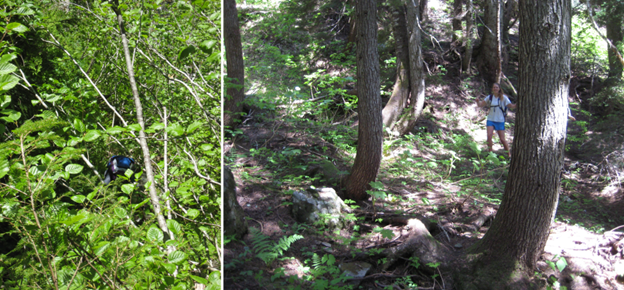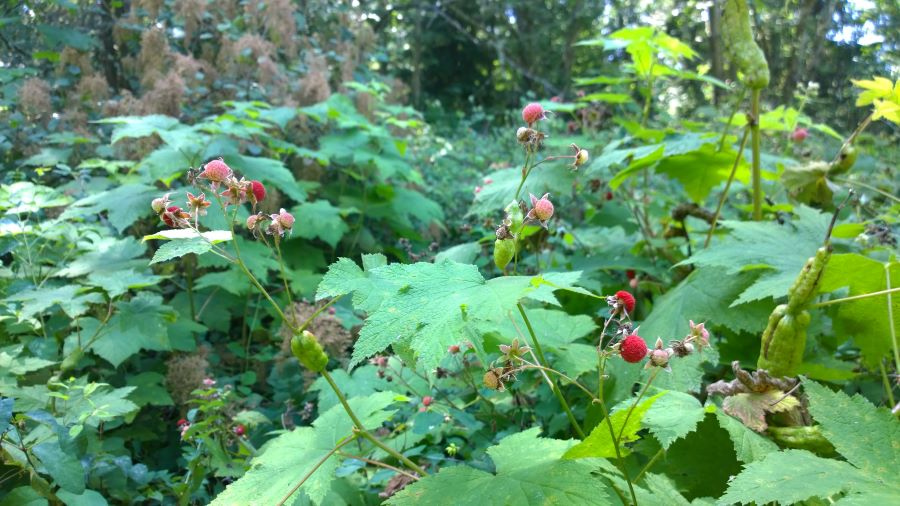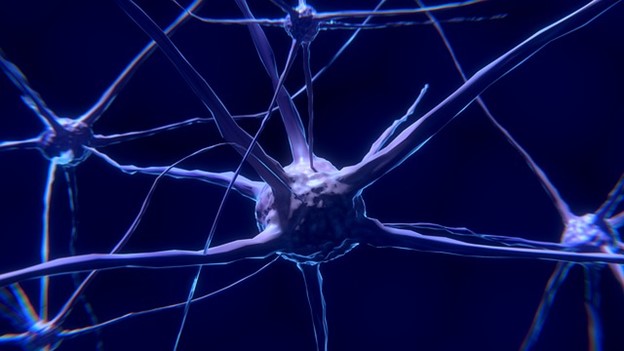
Have you gotten off-trail on a hike and found yourself doing some serious bushwhacking?
(Those of you who answered “no” have clearly never been hiking with me.)
Well, let me tell you from my extensive experience that bushwhacking is hard, painful work: forcing your way through pokey salmonberry bushes, struggling over slippery vine maple, getting slapped in the face by wet tree branches.
So why on Earth would anyone go bushwhacking?
To get somewhere better, of course: a secret waterfall, a mountaintop view, a patch of thimbleberries.

A Path is Born
Having bushwhacked your way to the objective, you’ve inevitably broken some branches and trampled some shrubs. So, if you return to the same path in the near future, the bushwhacking will be slightly less difficult. If you return over and over again, always walking the same route, it will get much better. A trail will form and walking the path will become easy.

But, if you only come back occasionally or if you take a different route each time, you will never establish a trail. Each time will be just as hard as the first.
All of this is a metaphor for building habits, of course.
Strategic Habit Building is Trail Building
It takes willpower to establish a habit because you have to blaze the trail. That’s why it’s so hard to start: You’re bushwhacking.
But if you’re strategic, you’ll only have to bushwhack once. If you walk the path frequently and consistently, it will get easier and easier. Perform your new habit every day, and you’ll blaze a clear trail that you can follow with very little effort.
Once established, a habit is easy to maintain, much like maintaining a well-established trail. You just have to keep walking it. There is occasional work to do. Unexpected storms throw obstacles into your path, but they’re manageable because the trail is otherwise easy to follow.
The Neuroscience of New Habits

If you perform a new behavior, a new neural connection will form in your brain. If you repeat the behavior, that connection will be strengthened. The more repetitions, the stronger the neural connection. This neuroplasticity is how a “trail” is formed in your mind.
But if you don’t repeat the behavior, the neural connection will fall apart. You have to come back to your trail again and again, or it will never become well-established.
This happens all the time when people try to change their habits. They decide on a new behavior, muster the willpower to do it once or twice, but then quit. A week or two later, they try again, and it’s just as hard as the first time. They mistakenly conclude that they’re just not capable.
Remember that your brain follows a simple “use it or lose it” principle for all neural connections. That’s why consistency is so important for habit formation. Even a well-worn path will be reclaimed by the forest if you neglect it, becoming overgrown and hard to follow.

Consistency is Key
Consistency isn’t just about doing it every day; it’s also about doing it at the same time, in the same place, and in the same way.
Say you want to get to a mountain lake, but there’s no trail. So you bushwhack your way there. The lake is great, so you come back the next day. But you don’t follow the same route, so you’re bushwhacking again. Each time you visit the lake, you take a different route, so you never establish a trail. It’s always just as hard as the first time.
This is a classic habit-formation mistake. You commit to doing some new behavior, but you don’t establish a clear plan of when, where, and how. You do it at random times of day, in a variety of locations, in an inconsistent manner. Thus, your brain never learns to associate a specific behavior with a particular time and place, so you never form a strong neural connection.
The smart approach is to walk the same exact path each day because that will quickly establish a trail that’s easy to follow.
For example, I meditate each morning right after exercising and reading a passage from a book of wisdom. I have a dedicated chair for meditation in my office. I have a pre-set timer on my phone (which will be in airplane mode). I start the timer, sit up straight, fold my hands in my lap, close my eyes, and begin focusing on my breath. I’ve done this exact routine so many times that it’s automatic. No willpower is required.
Getting Back on Track
Sometimes when I’m out hiking, I have to bushwhack to find my way back to the trail – to get back on track after some off-trail misadventure.

This is akin to the hard work of reestablishing a routine that you’ve temporarily abandoned.
You had a well-formed habit but fell out of it for a time. The neural connection is still there, but your brain isn’t accustomed to using it. You need to recommit to the old routine and get back on track. It will be hard the first time, but it will quickly get easier because you’ve walked this path many times before.
Bushwhacking Your Way to New Habits
Keep this metaphor in mind whenever you try to change your behavior. If you’re always bushwhacking, it means you’re always relying on brute-force willpower, which is a terrible approach.
It should only be difficult the first few times. Repeat the behavior regularly and consistently, and it will quickly become a routine that’s as easy to follow as a well-worn trail.
P.S. Are you looking for help getting new habits to stick?
Change is much easier when you have a coach providing strategic guidance, troubleshooting, and accountability.
Send me an email to schedule a free habit coaching consultation: chris@becomingbetter.org
